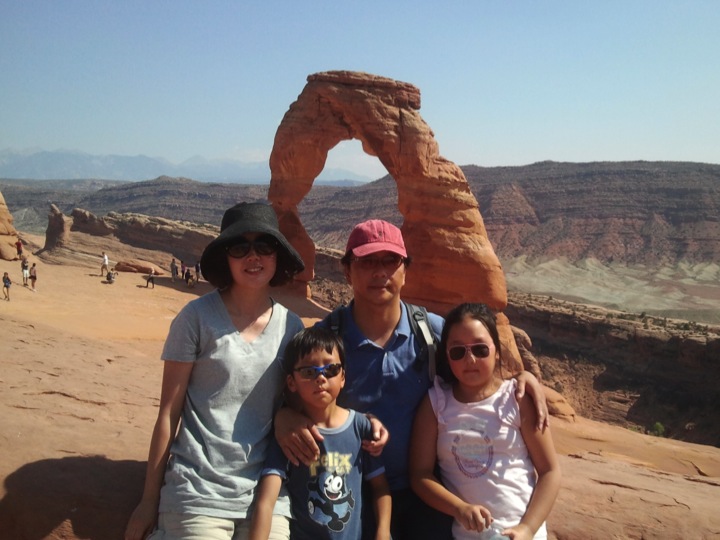ME 2450 - Numerical Methods
Spring 2006
Class Information
Instructor: Eric Pardyjak
Lecture Time/Location: M,W 2:00 pm-2:50 pm EMCB 101
Office hours: 3pm - 4pm M W
Office: Room 160 KEN
Phone: 585-6414
email:pardyjak@eng.utah.edu
Text: Numerical Methods for Engineers by S.C. Chapra and R.P. Canale, Fifth Edition, McGraw Hill 2006.
Class Syllabus
Announcements:
April 11, 2006: We will have QUIZ #4 on WebCT this coming Weds and Thursday (April 19 and 20) from noon on Weds to midnight on Thursday.
April 2, 2006: We will have a quiz on WebCT this Thursday and Friday on iterative solvers and curve fitting methods.
April 2, 2006: The due date for homework 7 has been delayed to April 3.
Feb 27, 2006: I've added my Muller's method code in the handout sections below for those who had difficulty programming it up.
Feb 15, 2006: Quiz number 2 will run from Tuesday 2/21 at noon through Thursday 2/23 at noon on WebCT. It will be a 15 minute quiz covering Roots of Equations.
Feb 8, 2006: Homework 4's due date has been changed to Feb 13. Also, the first quiz has been scheduled for Thursday and Friday Feb 9 and 10. You can take the quiz on webCT anytime between 10am Thursday and 5pm Friday.
Jan 29, 2006: I will be out of town this week. Dr. James Guilkey will be lecturing. He will be able to answer any questions you may have on this weeks homework. I will NOT have a quiz this week. We will discuss the first quiz when I return.
Jan 23, 2006: I will hold additinal Office Hours on Tuesday from 3-4pm
Assignments:
Homework #1 (Due 1/18/2006): 1.12, 1.13
Homework #2 (Due 1/25/2006): 3.2, 3.7, 3.9, 3.10 (code should be written for 3.2 & 3.9)
Homework #3 (Due 2/1/2006): 4.5, 4.6, 4.15 (no code is required for this week's homework)
Homework #4 (Due 2/13/2006): 5.2, 5.7 5.15 (code should be written to solve all three problems. This will essentially require you too write a bisection method solver and a false position method solver. Please hand in the following: your code and the solutions. If the question asks for you to graphically determine a root, be sure to include a plot)
Homework #5 (Due 2/22/2006): 6.3,7.4,7.17 (You will need to write a Newton Raphson solver code for 6.3 and a Mueller's method code for 7.4. No code is required for 7.17 although you may use the code you wrote from 7.4)
Homework #6 (Due 3/1/2006): 9.4, 9.8, 9.10 (please write code for problems 9.8 and 9.10)
Homework #7 (Due 4/3/2006): 10.2, 10.3, 11.7 (please write code for all three problems)
Homework #8 (Due 4/12/2006): 17.7, 17.12, 17.28 (please write codes for all problems)
Homework #9 (Due 4/19/2006): 21.6, 21.11, 22.4, 23.4 (No need to write code for these problems if you choose not to.)
Homework #10 (Due 4/26/2006): 25.18, 27.2, 27.3 (write code for all three please, use the Euler's method to solve 27.2, for problem 25.18 solve the ODE from problem 25.1 not 25.7, NOTE: 5 points of extra credit will be given if you do solve 25.7. If you are solving problem 25.1 please use a step size h=0.5. Also, for 27.2 if you use Runge-Kutta I will give you 5 extra credit points.)
Solutions:
Handouts:
Chapter 1-4 - Introductory Material
- MATALB intro handout
- Sphere Drag example 1 m-file dragexample.m
- Sphere Drag example 2 m-file dragexample2.m with Euler's method
- Lecture 1: Introduction to Numerical Methods
- Lecture 2-3: Structured Programming and Round-off Errors Lecuture
- Lecture 4: Taylor Series and Truncation Error
Chapter 5-8 - Roots of Equations
- Lecture 5: Roots of Equations
- Lecture 6: Roots of Polynomials
- Lecture 7: Engineering Applications for root finding techniques
Chapter 9-12 - Linear Algebraic Equations
- Lecture 8: Matrix Review and Introduction to systems of Linear Algebraic Equtions
- Lecture 9: Naive Gauss Elimination
- Muller's method Matlab code
- Function Call for Muller's method code
- Exam 1 Review handout
- Lecture 10: LU Decomposition
- Lecture 11: Iterative Solvers
Chapter 17 - Curve Fitting
- Lecture 12: Curve Fitting Methods
Chapter 21-23 - Numerical Integration and Differentiation
- Lecture 13: Numerical Integration
- Lecture 14: Numerical Differentiation
Chapter 25 and 27 - Ordinary differential Equations
- Lecture 15: Introduction to ODEs and Runge-Kutta methods - Euler's method
- Lecture 16: Introduction to Boundary Value Problems, the Shooting method, Finite Differences and PDEs
Miscellaneous Material that will help for the final exam
- LU Decomposition worked out example.
- Full matlab LU Decomposition Code:
- ludecompose.m main routine
- decompose.m decompose function
- ppivot.m partial pivoting function
- substitute.m substitution function
- Heat Diffusion Example m-file from class showing the steady state distribution of temperature within heated plate with a notch.
- Differential Equation Classifation handout.
- Multiple Equation Runge-Kutta code (similar to homework 27.2)
- Multiple Equation Runge-Kutta derivative subroutine used by the main code.
- Finite Difference Code to solve heat transfer boundary value promblem (27.3)
- Homework 10 Solutions
- Final Exam Review Notes
Grader Information
Prathap Ramamurthy
email: rprathap@gmail.com
Bharat Thakkari
email: thakkar_bs@yahoo.co.in


